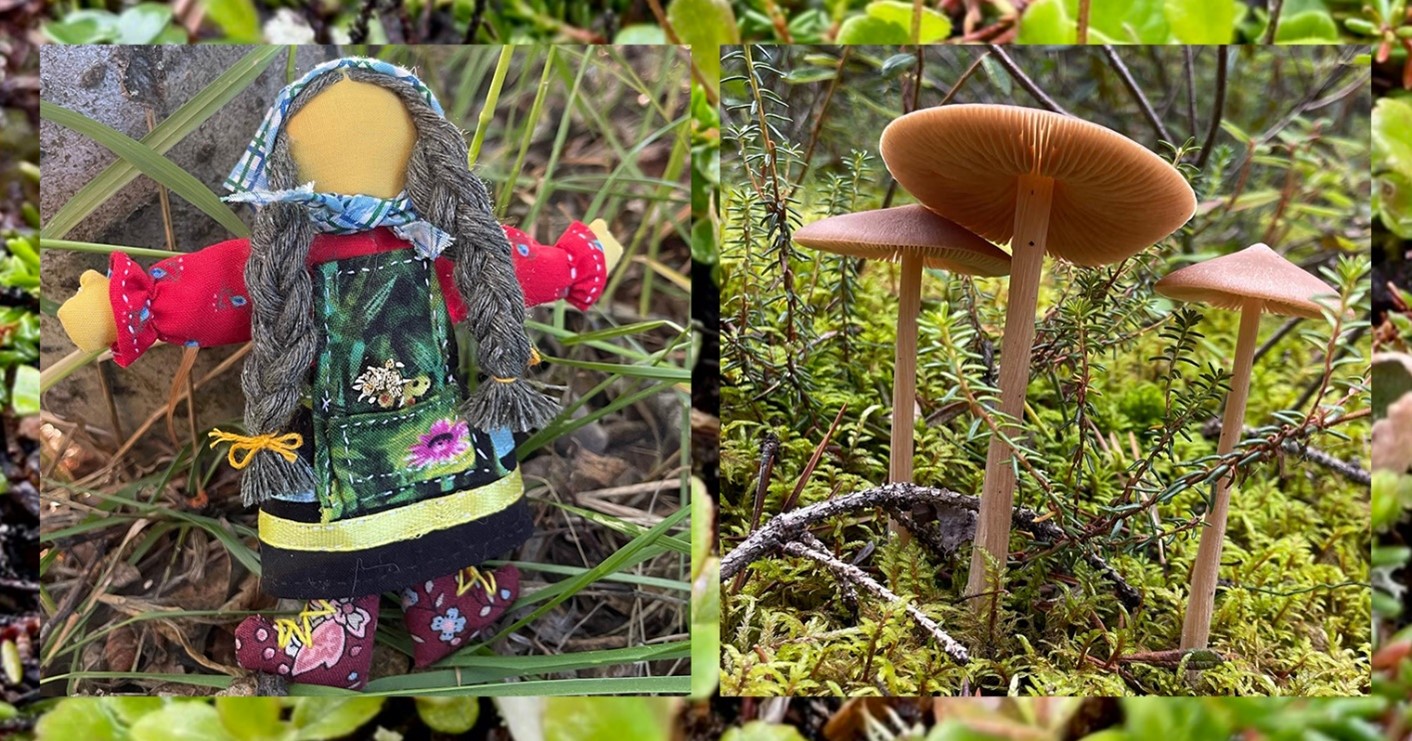Créer des citoyennes et citoyens artistes : mouvements transformationnels en éducation et programmation artistiques
Contenu principal de l'article
Résumé
Le professionnalisme croissant, un marché de l’art dynamique et la révolution technologique appellent une refonte de l’éducation artistique et de la programmation muséale. Cet article donne un aperçu des approches de rechange qui ont émergé au cours des 50 dernières années et de l’urgence de nouvelles itérations. En tant que professeure d’art, j’ai fait la promotion d’autres types d’école d’art, notamment des stages sur le terrain, des écoles libres et des ekstitutions (désinstitutions). C’est au cours de mes quatorze ans de travail au Mexique que j’ai découvert certains mouvements culturels tels que les internats en zone rurale, l’École de sculpture libre et le Centre de documentation interculturel. De retour au Canada, dans mes fonctions d’éducatrice en milieu muséal, mes programmes furent influencés par des concepts tels que virages pédagogiques, programmes participatifs, hacking muséal et le travail social muséal. Cet article introduit des mouvements transformatifs d’éducation artistique et de programmation ayant pour but de former des citoyennes et citoyens artistes, désireux de contribuer à une société planétaire.
Téléchargements
Renseignements sur l'article

Cette œuvre est protégée sous licence Creative Commons Attribution - Partage dans les Mêmes Conditions 4.0 International.
The copyright notice is CC BY SA.
This license lets others remix, tweak, and build upon your work even for commercial purposes, as long as they credit you and license their new creations under the identical terms. All new works based on yours will carry the same license. Thus any derivatives will also allow commercial use. For example, if someone translates your article into French, the French version of the article will also have to be shared under a CC BY SA license.
Références
Camacho, Z., & Hernández, J. (2008). La Resistencia de las normales rurales. Contralínea. http://dialogoentreprofesores.blogspot.com/2011/12/la-resistencia-de-las-normales-rurales.htmlDauber, H. (1975). An invitation to conscientization and deschooling: a continuing conversation. Risk, 11(1), 28-32. https://another-roadmap.net/articles/0002/0782/freirepauloillichivan-sur-riskpilgrimsoftheobviouswcc-small.pdfFancourt, D., & Finn, S. (2019). What is the evidence of the role of the arts in improving health and well-being? A scoping review. Health Evidence Network Synthesis Report 67. World Health Organisation. Fine Arts Fund. (2008). The Arts Ripple Effect. A Research-Based Strategy to Build Shared Responsibility for the Arts. Topos Partnerships for the Fine Arts Fund. Cincinnati. https://www.artswave.org/docs/default-source/Research-Reports/the-arts-ripple-effect-report-january-2010.pdf?sfvrsn=c7791e28_0González Martínez, M. S. (2018) Los mundos simbólicos: estudios de la cultlura y las religions. Vol XV. Las ciencias sociales y la agenda nacional. Reflexiones y propuestas desde las Ciencias Sociales. Consejo Mexicana de Ciencias Sociales. Mexico (pp. 275-288). https://www.comecso.com/ciencias-sociales-agenda-nacional/cs/article/view/1422/1030Merritt, E. (Ed.) (2012). TrendsWatch 2012. American Association of Museums. https://www.aam-us.org/wp-content/uploads/2017/12/2012_trendswatch.pdfMisiano, V. (2002). An Analysis of 'Tusovka'. Post-Soviet art of the 1990s. In G. Maraniello (Ed.), Art in Europe 1990-2000(pp. 161-177).Morales Moreno, J. (2015). Notas para una historia crítica de “La Esmeralda”: la cuestión de sus orígenes (1927, 1943). Discurso Visual Revista de Artes Visuales Tercera Época. Centro Nacional de Investigación, Documentación e Información de Artes Plásticas. https://www.discursovisual.net/dvweb36/TT_moreno.htmlPadilla, T. (2021). Unintended Lessons of Revolution.Student teachers and political radicalism in twentieth-century Mexico. Duke University Press.Petrovich, D., & White, R. (Eds.) (2012). Draw It with Your Eyes Closed: The Art of the Art Assignment. Paper Monument. Pujol, E. (2009). On the Ground: Practical Observations for Regenerating Art Education. In S. H. Madoff (Ed.), Art School: Propositions for the 21stcentury(pp. 1-14).Pujol, E. (2022). A Letter for Students Considering the Art of Human Rights. Draft for a Panel Presentation at the Center for Human Rights and the Arts at Bard College on April 29. https://drive.google.com/file/d/1u80tqZbVG8o3f7yNctwcvi03zo3RUiW2/view
Rodriguez Doring, A. (2015). Una historia de La Esmeralda, la escuela de arte del México posrevolucionario. Discurso Visual Revista de Artes Visuales Tercera Época. Centro Nacional de Investigación, Documentación e Información de Artes Plásticas. http://www.discursovisual.net/dvweb36/TT_doring.htmlRogoff, I. (2010). Free. E-flux Journal, Issue 14. https://www.e-flux.com/journal/14/61311/free/Rogoff, I. (2010). Turning. In P. O'Neill & M. Wilson (Eds.), Curating and Educational Turn(pp. 32-46). https://www.e-flux.com/journal/00/68470/turning/Rozan, A. (2017). Hello and Welcome to the Future. Museum 2040. American Alliance of Museums. November/December 2017, Volume 96, Number 6, 17-21.Schneider, F. (2010). (Extended) Footnotes on Education. E-flux journal. Number 14, March. http://www.e-flux.com/journal/extended-footnotes-on-education/Schor, M. (2012). You Have Permission to Fail. In D. Petrovich & R. White (Eds.), Draw It with Your Eyes Closed: The Art of the Art Assignment. Paper Monument (pp. 90-91).Sherman, H. L. (1947). Drawing by Seeing: A new development in the teaching of the Visual the Arts through the training. Hinds, Hayden & Eldredge. New York and Philadelphia. Silverman, L. (2010). The Social Work of Museums.Routledge. Simon, N. (2010). The Participatory Museum. Museum 2.0.Simon, N. (2012) Khan Academy and the Revolution of Online Free Choice Learning. October 3, 2012. http://museumtwo.blogspot.ca/2012/10/khan-academy-and-online-free-choice.htmlSimon, N. (2016). The Art of Relevance. Museum 2.0.Smith, M. (2010). Ivan Illich: Deschooling, conviviality and the possibilities for informal education and lifelong learning. The Encyclopedia of Pedagogy and Informal Education, 1997-2011. https://infed.org/mobi/ivan-illich-deschooling-conviviality-and-lifelong-learning/Sweeny, E. (2013). A Classroom with Legs. Art21 Magazine. October-November issue, Becoming an Artist. https://magazine.art21.org/2013/10/01/a-classroom-with-legs-ernesto-pujol-and-the-field-school/Zdravomyslova, E. (2002). The Café Saigon Tusovka: One Segment of the Informal-Public Sphere of Late-Soviet Society. In R. Humphrey, R. Miller, & E. Zdravomyslova (Eds), Biographical Research in Eastern Europe(pp. 141-177).

